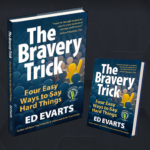
by Ed Evarts | Mar 27, 2015 | Visibility and Value
Let’s face it. At some point in the development of our society, we lost the ability to introduce ourselves to one another. I was not alive when this loss occurred, so I do not have firsthand knowledge of when this happened. I am not a sociologist, so I do not have the...

by Ed Evarts | Mar 18, 2015 | Visibility and Value
Regardless of your comfort level or skill, you are probably one or more of the following when you introduce yourself to a new colleague: • Inconsistent. Sometimes you introduce yourself to others effectively and sometimes you do not. • Uncomfortable. You find...

by Ed Evarts | Mar 11, 2015 | Visibility and Value
As you work to raise your visibility in your organization and industry, certain activities and behaviors are more productive and will accelerate your efforts. These “accelerators” are like putting rocket fuel in a Honda Civic. When you “step on the gas,” you will...









